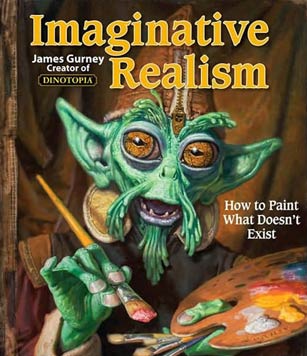It's the best day of the week, Vorthos Wednesday.
We've changed things up a little bit in the lineup, and in doing so, we've actually omitted a small demographic. As Vorthos cares the most about art, I figure today's article will cover how you, your friend, your sister, or your girlfriend can create an artwork for the brand Magic: The Gathering at Wizards of the Coast, Inc., a subsidiary of Hasbro, Inc.
I am not an artist employed therein, nor am I speaking on behalf of Wizards of the Coast, but the information is out there. I've cited it below and have compiled it for you here.
The steps to be come an artist are:
1. Become an amazing artist.
2. Send an e-mail to artdrop@wizards.com.
3. Make art for Magic: The Gathering.

Oh . . . you've already tried that?
Then we have a situation.
You have two choices:
1. Become a Magic artist.
2. Don't become a Magic artist.
I faced a similar dilemma when I was in high school: Choose to be marginal in a sport I had an aptitude for, or decide to make a colossal sacrifice to become great.

I chose the latter.
I spent half my sophomore year in a country whose language is quite a bit more difficult than English, with a child's ability to converse and little outlet other than the training I was participating in. Needless to say, returning home to an environment where friends changed, others graduated, and the loneliness of blindly pursuing a goal became quite apparent.
But it paid off.
I became faster, doors opened, and I was able to succeed, earn a scholarship, get an education, and meet my fiancé. It's worked out quite well.
But at the time, it was hell.
Finding red oil paint under your fingernails for the umpteenth week in a row also gets old; trust me, I know.
So, aspiring artist, if you're prepared, let's get you started toward becoming great.
Anyone can be good at anything. It takes hard work, an unwavering desire for excellence to become great, and a little luck to become a Magic artist. They have thousands of submissions each year, but new artists are also accepted into the fold each year.
Let's dive into what it takes.
Learn more about fantasy art, or don't learn more about fantasy art?
If you aren't yet reading Dungeons and Dragons art director Jon Schindehette's blog, ArtOrder, you're beyond help. The single best way to improve your skill, become more prepared, and periodically look behind the curtain is his blog.

Illustration by Richard Whitters
Join the ArtOrder community. Many of the artists there are onto the next step of improving their craft, and they offer advice to other artists.
Join the LinkedIn group Fantasy/SciFi Illustrators and Art Directors. They discuss intricacies of the field, such as overused figures, and they occasionally have outside art directors give personal preferences on what reflects their brand.
Read Spectrum. The annual showcase has an introduction that is a must-read each year it's published. In addition, look at the art that is commissioned by different brands. This is the best art of the year. If you can create at this level, you shouldn't have a problem getting a commission. The free interlibrary loan system at your local library is a great way to read one to two at a time to gain a feel of the quality. In fact, Magic artworks have been getting accepted at a greater rate in recent years.
Perfect your skill, or let your skill marinate and deteriorate?
I assume you know the basics of color, line, shapes, etc. already. What you might not have had in your education (formal or otherwise) is required readings. These two, among the many that you should voraciously read, are from James Gurney:
Once you feel confident, start getting used to how commissions and critiques feel. Post near-finished art on the Magic Art and Artists board on the Mothership for a quick critique. The Vorthos crowd there knows art and will make subtle connotations and connections to in-game flavor and storylines—if you ask politely.
Increase your repertoire of media. This seems self-explanatory, but add a medium and become comfortable enough to have one piece from that medium in your portfolio. In addition, read and learn from masters in the field from their FAQs, how-to guides, and workshops. These are becoming more numerous as HD video (and editing) becomes more accessible every year.
Get a portfolio review at a major convention. Art directors often set up times for short—five-minute or so—reviews of portfolios at gaming conventions. Treat these as an interview. Come prepared with your best, answer to the best of your knowledge, leave him or her with a takeaway, and above all, be friendly and take their critique as an opinion. Art directors are human, but they try to be as objective as possible when examining work.
From ArtOrder, the major conventions coming up:
San Diego Comic Con International • July 21–24, 2011 • San Diego, CA
GenCon • August 4–7, 2011 • Indianapolis, IN
Wizard World/Chicago Comic Con • August 11–14, 2011 • Chicago, IL
Origins Game Fair • August 22–26, 2011 • Columbus, OH
Pax Prime • August 26–28, 2011 • Seattle, WA
Dragon Con • September 2–5, 2011 • Atlanta, GA
Alternative Press Expo (APE) • October 1–2, 2011 • San Francisco, CA
New York Comic Con • October 13–16 • New York, NY
World Fantasy • October 27–30, 2011 • San Diego, CA
IlluxCon • November 3–6 • Altoona, PA
Add to your portfolio, or keep out-of-date or, worse, marginal pieces in your portfolio?
Do dry runs with friends. Do they have D&D characters? Ask for a Location/Color/Action/Focus/Mood and then make three to six sketches that he or she will pare down to one that you'll make. Get used to the commission process and find pitfalls in your creation process that you can make into strengths.
For example, shifting of weight is a skill that is very difficult to master with armor, scales, and cloaks in the way. Practice "seeing" the shifting of weight and how balance will influence your artwork. Look at the images below and see how the shoulders or the hips align to the ground with load-bearing legs. From that example:
Would a medieval-sized shield affect the load bearing of a figure? Does a messenger-type bag shift weight on the shoulders? Ask yourself questions. Anyone can create a how, but the why tells the story and is what is important.


Submit your best, or hope and dream?
Before doing any submissions, please do your homework.
If you badmouth another brand or aren't able to weather a critique, how can an art director expect you to take commissioned directions? Think about it.
Like all writing, know your audience. Does the company have an anime style? Is it similar to Disney? Would NC-17 art be thrown out immediately? You should know before you submit. This differs significantly from art for art's sake, an intrinsic value placed on the creative process that holds the artist as judge of quality. Illustration and commissioned art differs from the community's viewpoint of art in museums, but it does so only in purpose, not quality.
Once you're ready and truly ready, e-mail artdrop@wizards.com with an attachment of your two to three best works and a link to an online website with a portfolio. It is very important that you use an institution's e-mail account. Personal e-mails often get lost or ignored due to the volume they receive. They create these depositories for a reason, dear reader. Use them.
As ambitious a Magic artist you are, consider sending to other brands. Dungeons and Dragons is always looking for artists, as is Tor Books. From a quick Internet search, here are two more e-mail submission addresses:
zrobinson@fantasyflightgames.com
In addition to the institutions, I suggest also submitting to the art annuals. Getting an image in the unpublished section in Spectrum becomes an immediate reference point that nearly every art director will have in his or her office.
Let's revisit this topic soon. If you still have questions, read the entire ArtOrder blog. If you still have questions, leave them in the comments below, and we'll chat soon.

I wish you luck.


























